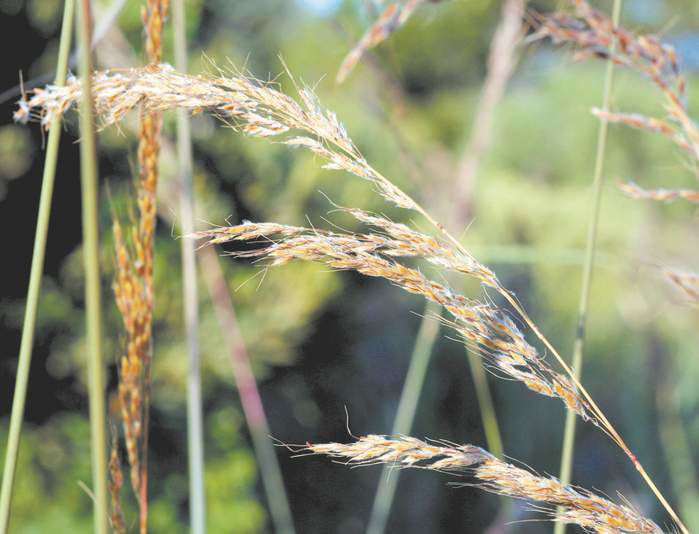Ornamental grasses liven up an autumn yard
Published 4:00 am Tuesday, November 20, 2012

- Yellow Indian grass grows in most parts of the United States.
In the fall, ornamental grasses are stars in the garden, their feathery plumes glowing in the autumn light.
Morning Light miscanthus sinensis is an easy one to grow in any full-sun yard because it tolerates wind, weather swings and variable soil conditions. Leave it in the garden until late winter, and then cut it back to the ground before new growth begins in warmer weather. Otherwise, it needs nothing but your admiration.
Some species are worth avoiding if you have little patience for their bad behaviors — pampas grass because it grows so large, and river oats because it sows seeds where you don’t want them.
There are many other ornamental grasses to enjoy, and their benefits are numerous for our environment and wildlife.
“Grasses add a lot of landscape interest, especially in the winter when their stems and seed heads are the only plants left in a garden … and their tall, slim blades contrast nicely with broad-leaf plants,” says Helen Hamilton, past president of the John Clayton Chapter, Virginia Native Plant Society. She and Gus Hall, a retired botanist from the College of William and Mary in Williamsburg, Va., have written a grass-inclusive book, called “Wildflowers and Grasses of Virginia’s Coastal Plain,” and are seeking out a publisher.
“They are important as soil stabilizers, as well as cover and food for wildlife.”
Here are three of Hamilton’s favorite native grasses featured in the book:
• Yellow Indian grass, or Sorghastrum nutans. Growing 2-8 feet tall and topped by a large, plume-like, golden-brown seed head, the grass is attractive in the fall when the flowers produce dangling yellow stamens. The leaves are slender and blue-green, turning orange-yellow to purple in the fall. Widespread in Virginia, most U.S. states and Canada, the grass grows in limestone soils, open woods, road banks and fields. Many birds like its seeds, and it’s a larval host plant for the pepper and salt skipper butterfly.
• Purple muhly grass, or Muhlenbergia capillaris. In the fall, clouds of purple wisps wave in the autumn sun. For many months, the thin, spiky blades add interesting contrast to broad-leaved blooming perennials and annuals and evergreen shrubs. In early fall, the seed heads begin to form where the blade bends at a right angle, and by the end of September, the tip of each blossoms into a 10-by-6-inch filmy purple haze. In winter the purple stems and seed heads dim to tan, providing a lovely contrast to evergreens. Cut back the stems in March, when the new growth emerges, and drop the spent blades as mulch and groundcover. This grass is a native of moist pine barrens near the Atlantic coast and parts of Mississippi and Texas. The genus was named in homage to G.H.E. Muhlenberg, a self-taught botanist of the 18th century, called by his contemporaries the American Linnaeus. “Capillaris” means “hair-like or delicate,” referring to the tufted purple flowers.
• Purpletop, or Tridens flavus. Purpletop is easily recognized in late summer by its loose, open, purple flower clusters in a distinctive weeping form. This slender perennial grows to 4 feet tall, the upper stem, branches and spikelets covered with a waxy, greasy substance. The large purple seeds are widely spaced on thin panicle-branches. Purpletop is common along roadsides, fields, and edges of woods, ranging from Massachusetts and southern Michigan and Nebraska south to Florida and Texas. It’s the larval host to four species of butterflies.
Learn more about the John Clayton chapter at www .claytonvnps.org.






